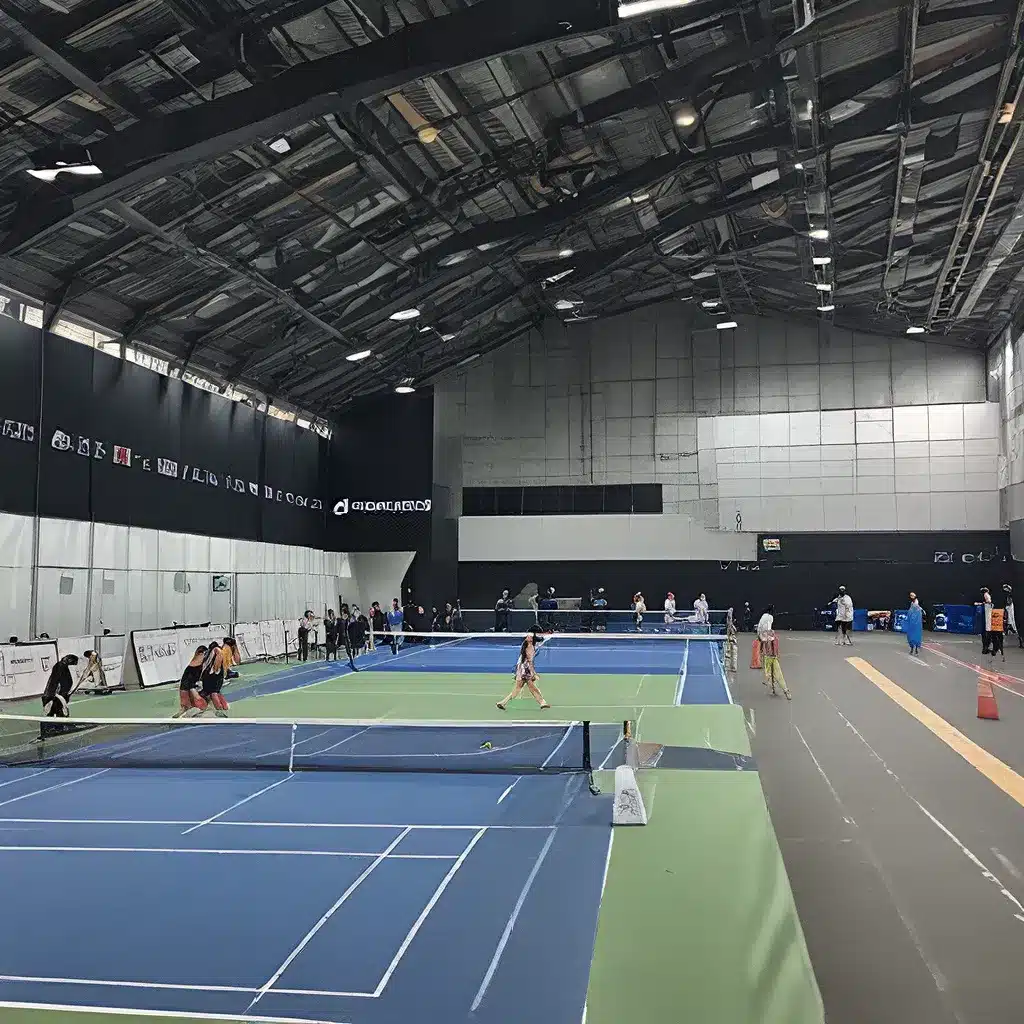
Tokyo, the bustling capital of Japan, is renowned for its rich cultural heritage and innovative spirit. At the heart of this dynamic city lies the Tokyo Open, a prestigious sports event that attracts athletes and spectators from around the world. The Tokyo Open’s facilities, designed to accommodate the highest levels of competition, offer a unique and captivating experience for visitors.
Unveiling the Architectural Marvels
The Tokyo Open’s primary venue, the Ariake Tennis Forest Park, is a true architectural marvel. Constructed with the latest in sustainable design, the complex boasts a sleek and modern aesthetic that seamlessly blends with the surrounding natural landscape. The main stadium, with its retractable roof, can accommodate over 17,000 spectators, providing a comfortable and weather-protected environment for the thrilling matches.
One of the standout features of the Ariake Tennis Forest Park is the attention to detail in its construction. The architects have incorporated eco-friendly materials and energy-efficient systems, making the venue a shining example of sustainable sports infrastructure. Solar panels, rainwater harvesting, and strategic ventilation systems all contribute to the overall environmental sustainability of the complex.
Immersive Spectator Experience
The Tokyo Open’s commitment to providing an exceptional spectator experience is evident in every aspect of the facilities. The seating arrangements are designed to offer unobstructed views of the court, ensuring that every fan can fully immerse themselves in the excitement of the matches. Premium seating options, such as the exclusive sky lounges and hospitality suites, cater to those seeking a more elevated experience, with luxurious amenities and exclusive dining options.
Beyond the playing fields, the Tokyo Open’s facilities boast a vibrant array of entertainment and dining options. Spectators can explore a diverse range of food stalls, showcasing the best of Japanese cuisine, from delectable sushi to mouthwatering yakitori. The complex also features interactive fan zones, where visitors can engage in tennis-related activities and learn more about the sport’s rich history.
Accessibility and Inclusivity
The Tokyo Open’s facilities have been designed with accessibility in mind, catering to visitors with varying needs. Wheelchair-accessible seating, ramps, and designated parking areas ensure that the event is inclusive and welcoming to all. The organizers have also implemented a comprehensive wayfinding system, with clear signage and helpful staff, to assist visitors in navigating the expansive complex with ease.
In addition to physical accessibility, the Tokyo Open has made strides in promoting inclusivity through its programming. The event features dedicated sessions and clinics for individuals with disabilities, providing them with the opportunity to engage with the sport and network with like-minded enthusiasts.
Technological Innovations
The Tokyo Open’s facilities are at the forefront of technological advancements in sports. The use of cutting-edge video screens, real-time scoring systems, and advanced camera technology enhances the viewer experience, allowing spectators to follow the action with unprecedented clarity and immediacy.
The complex also boasts a robust digital infrastructure, with high-speed internet connectivity and seamless integration of mobile applications. Fans can access comprehensive match information, purchase tickets, and even engage in interactive features through their smartphones, further immersing themselves in the event.
Legacy and Community Impact
The Tokyo Open’s facilities are not merely venues for athletic competition; they serve as hubs for community engagement and legacy-building. The complex hosts a wide range of educational programs, clinics, and outreach initiatives, aimed at inspiring the next generation of tennis enthusiasts and fostering a love for the sport among the local population.
Additionally, the Tokyo Open’s commitment to sustainable practices extends beyond the confines of the event itself. The complex serves as a model for sustainable sports infrastructure, with its innovative design and eco-friendly systems inspiring other sporting venues to adopt similar practices. This legacy of environmental stewardship and community engagement ensures that the Tokyo Open’s impact extends far beyond the tournament itself.
Conclusion
The Tokyo Open’s facilities are a true testament to the city’s commitment to excellence, innovation, and inclusivity. From the architectural marvels to the immersive spectator experience, the complex offers a captivating and unforgettable journey for visitors. By seamlessly blending cutting-edge technology, sustainability, and community engagement, the Tokyo Open’s facilities set a new standard for sports venues worldwide.
As you plan your visit to the Tokyo Open, be sure to explore the Old Stadium Journey website, where you can uncover a wealth of information about the event and its exceptional facilities. Prepare to be captivated by the vibrant atmosphere and the world-class experience that the Tokyo Open has to offer.

